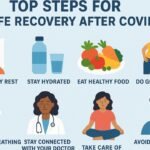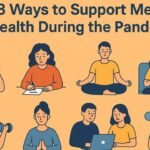The COVID-19 pandemic didn’t just affect our daily routines, it completely changed the way we look at healthcare. Suddenly, simple things like visiting the doctor, getting a checkup, or even buying medicine felt different. Healthcare shifted from being something we took for granted to something we learned to approach with caution and care. Let’s take a closer look at how COVID-19 changed everyday healthcare practices.
A New Focus on Cleanliness
Before the pandemic, washing hands or sanitizing wasn’t something people thought about constantly. But once COVID-19 hit, cleanliness became the center of attention. Hospitals, clinics, and even small health centers started following stricter cleaning rules. Sanitizer stations popped up everywhere, masks became a part of daily life, and hygiene became a habit instead of an option.
Rise of Telemedicine
Remember when seeing a doctor meant waiting in long queues at clinics? COVID-19 made us realize that healthcare could also be digital. Many people started using telemedicine – video calls or phone calls with doctors – for basic health problems. This reduced the risk of exposure and saved time. Even after the pandemic, telemedicine continues to be a preferred option for many patients.
Social Distancing in Healthcare Settings
Hospitals became places where social distancing was strictly followed. Waiting rooms were rearranged, chairs were spaced out, and patient appointments were spread out to avoid crowds. This new system actually helped reduce infections and made hospital visits feel safer.
Greater Awareness About Health
COVID-19 taught us not to ignore small health issues. People became more aware of symptoms like cough, fever, or breathing problems. Instead of brushing it off, many started seeking medical advice earlier. This awareness led to quicker treatments and better health outcomes.
Mental Health Came Into Spotlight
Earlier, mental health was not always openly discussed. But during COVID-19, stress, anxiety, and loneliness became common. Healthcare practices began to include mental health checkups, counseling, and online therapy sessions. It reminded us that health isn’t just about the body—it’s also about the mind.
Importance of Vaccines
The pandemic highlighted how important vaccines are. People became more open to vaccinations not only for COVID-19 but also for flu and other diseases. Healthcare workers started focusing on spreading vaccine awareness and educating communities about prevention through immunization.
Contactless Services and Digital Records
From online appointment booking to digital prescriptions, COVID-19 sped up the use of technology in healthcare. Patients could now receive their reports on their phones, pay bills online, and even get medicines delivered at home. This made healthcare more convenient and safe.
Stronger Connection Between Patients and Healthcare Workers
During the pandemic, doctors, nurses, and healthcare staff became heroes. Their dedication created a stronger bond between patients and healthcare workers. People began to value and respect the medical community more than ever before.
Conclusion
COVID-19 was a tough time, but it left us with lessons that continue to shape healthcare today. Cleanliness, technology, mental health support, and preventive care have all become a part of everyday healthcare practices. These changes may have started during a crisis, but they are here to stay, making healthcare safer, smarter, and more patient-friendly.














